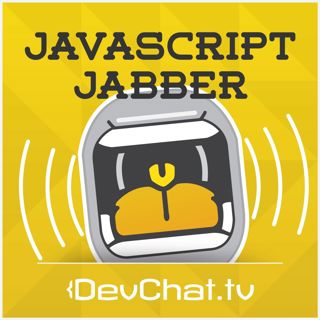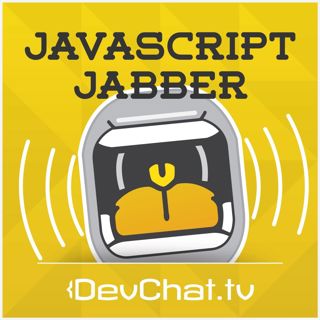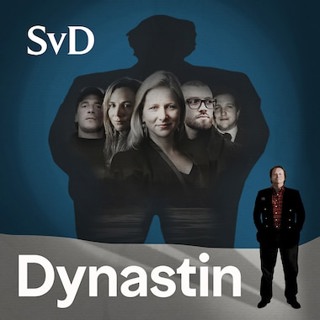
Guarding the JavaScript Supply Chain: Preventing NPM Attacks with Feross Aboukhadijeh - JSJ 695
Hey everyone—it’s Steve Edwards here, and in this episode of JavaScript Jabber, I’m joined by returning guest Feross Aboukhadijeh, founder of Socket.dev, for a deep dive into the dark and fascinating world of open source supply chain security. From phishing campaigns targeting top NPM maintainers to the now-infamous Chalk library compromise, we unpack the latest wave of JavaScript package attacks and what developers can learn from them.Feross explains how some hackers are even using AI tools like Claude and Gemini as part of their payloads—and how defenders like Socket are fighting back with AI-powered analysis of their own. We also dive into GitHub Actions vulnerabilities, the role of two-factor authentication, and the growing need for “phishing-resistant 2FA.” Whether you’re an open source maintainer or just someone who runs npm install a little too often, this episode will open your eyes to how much happens behind the scenes to keep your code safe.🔗 Links & ResourcesSocket.dev – Protect your open source dependenciesFeross Aboukhadijeh on X (Twitter)GitHub Actions Security Best PracticesTruffleHog Blog – On secrets exposure in Git reposBecome a supporter of this podcast: https://www.spreaker.com/podcast/javascript-jabber--6102064/support.
1 Nov 1h

Making Monorepos Breakproof with Anton Stoychev - JSJ 694
In this solo-hosted episode, I (Steve Edwards) dive deep into the world of modern monorepos with special guest Anton Stoychev from Yotpo. Anton shares his journey from the early days of PHP and IE6 nightmares to his current work in front-end infrastructure, performance optimization, and developer tooling.We talk about the challenges of managing dependencies, upgrading tools without breaking your codebase, and the evolution of developer experience across teams and companies. Anton also introduces Breakproof, Yotpo’s open-source monorepo template designed to make dependency management and tool upgrades painless—even when working with multiple Node.js versions, runtimes like Bun and Deno, and complex CI environments.If you’ve ever struggled with upgrading Jest, ESLint, or TypeScript in a large monorepo, or you’re curious how to isolate dependencies to keep your codebase maintainable over time, this episode is a must-listen.🔗 Links & Resources🔧 Breakproof on GitHub: breakproof.dev🧠 Yotpo LTD on GitHub: Yotpo Breakproof Base Monorepo💬 Follow Anton Stoychev: stoychev.dev on BlueSkyBecome a supporter of this podcast: https://www.spreaker.com/podcast/javascript-jabber--6102064/support.
24 Okt 1h 13min

Spec-Driven Development and the Future of AI IDEs with AWS’s Kiro - JSJ 693
In this episode of JavaScript Jabber, I sit down with AWS’s Clare Liguori and Erik Hanchett to talk about Kiro, a brand-new AI-powered IDE that’s reimagining the way developers build software. We dive into how Kiro takes “AI-assisted coding” to a new level through spec-driven development — a process that focuses on defining requirements and collaborating with AI to break projects into clear, manageable tasks.We unpack what sets Kiro apart from tools like Cursor and Copilot, explore its supervised vs. autopilot coding modes, and even talk about how it handles UI design, planning, and complex legacy codebases. Clare and Erik share behind-the-scenes insights on how Kiro was built using Kiro itself, what’s coming next for the platform, and how developers can join the early-access community to help shape its future.🔗 Links & Resources:🌐 Kiro Official Site🧠 AWS Developer Advocate TeamBecome a supporter of this podcast: https://www.spreaker.com/podcast/javascript-jabber--6102064/support.
9 Okt 43min

Modern JavaScript Testing: Integration, Contract Testing & AI Tools - JSJ 692
In this episode of JavaScript Jabber, I sit down with Dan Shapir and our special guest, Yoni Goldberg, to dive deep into the ever-evolving world of JavaScript testing. Yoni, a consultant who’s worked with over 40 organizations to refine developer workflows, shares valuable lessons learned from helping teams design efficient and reliable tests.We explore emerging trends in testing, including the rise of browser-based test runners, the shift from unit testing toward more integration and component testing, and how modern frameworks like Playwright, Vite Test Browser Mode, and Storybook are changing the way developers think about confidence in their code. We also tackle the role of AI in writing and maintaining tests, the pros and cons of mocking vs. real backends, and why contract testing is becoming essential in 2025.If you’ve ever struggled with flaky end-to-end tests, wondered how to balance speed with confidence, or wanted a clear breakdown of modern testing tools, this conversation will give you practical insights and fresh perspectives to take back to your projects.Links & ResourcesYoni Goldberg’s GitHubGoldbergYoni.comBecome a supporter of this podcast: https://www.spreaker.com/podcast/javascript-jabber--6102064/support.
29 Sep 1h 6min

The Comeback of RPC: SolidJS, TanStack, and the Future of JavaScript Frameworks with Ryan Carniato & Tanner Linsley - JSJ 691
In this episode of JavaScript Jabber, I sit down with Ryan Carniato, creator of SolidJS, and Tanner Linsley, the force behind TanStack, for a deep-dive conversation on the resurgence of Remote Procedure Calls (RPC) in modern web development. We explore why RPC is making a comeback, how frameworks like Solid, TanStack, and others are shaping the way we think about data fetching, and the technical innovations that are driving this movement forward.From streaming and serialization to type safety and the future of client-server communication, Ryan and Tanner share their experiences, insights, and the unique challenges they’ve faced building cutting-edge tools for developers. If you’ve been curious about where RPC fits in today’s frameworks—or just love geeking out about performance, signals, and developer experience—this is one episode you won’t want to miss.Links & ResourcesRyan Carniato on SolidJSTanStack (React Query, Router, Table, and more)Sentry – where Ryan is currently workingCreate TanStackSolidJS DiscordRyan CarniatoRyan Carniato is the creator of SolidJS, a high-performance JavaScript framework built on fine-grained reactivity. He’s also a Senior Software Engineer at Sentry, where he explores new approaches to front-end architecture and developer experience. Through his open-source contributions, talks, and in-depth content, Ryan has become a trusted voice in the web development community, helping developers think differently about building fast, reactive applications.Tanner LinsleyTanner Linsley is the founder of TanStack, the home of widely adopted open-source libraries like TanStack Query (formerly React Query), TanStack Router, Table, Virtual, and more. A full-time open-source entrepreneur, Tanner has redefined how developers manage state, caching, and data fetching in modern applications. With a focus on performance, simplicity, and type safety, his tools power some of the most advanced applications on the web today.Become a supporter of this podcast: https://www.spreaker.com/podcast/javascript-jabber--6102064/support.
22 Sep 1h 29min

Exploring Vibe Coding and the Future of Product Management with Gunnar Berger - JSJ 690
In this episode of JavaScript Jabber, I sit down with Amazon product leader Gunnar Berger to dive into the fast-evolving world of vibe coding and how it’s reshaping the relationship between developers and product managers. Gunnar brings a wealth of experience from his years in IT, Citrix, and now Amazon, and shares a unique perspective on how AI tools are changing the way products get built—from idea to prototype.We talk about the shifting role of product managers, how AI is compressing traditional workflows, and what it means for developers, UX designers, and even junior devs entering the industry. From rapid prototyping to AI-assisted documentation, Gunnar opens up about both the opportunities and the challenges this new paradigm introduces. Whether you’re a developer, product manager, or just curious about where AI is taking us, this conversation is packed with insights you won’t want to miss.Links & ResourcesGunnar Berger on LinkedInCloud CodeCursorKiro.devIf you enjoyed this episode, don’t forget to rate, review, and follow JavaScript Jabber on your favorite podcast app. And of course—share it with a friend who’d love to learn more about the future of coding and product management!Become a supporter of this podcast: https://www.spreaker.com/podcast/javascript-jabber--6102064/support.
12 Sep 1h 13min

How to Use Web Components, Iframes, and Module Federation for Multi-Framework Apps - JSJ 689
This week on JavaScript Jabber, we dive deep into the challenges and opportunities of mixing and matching frontend frameworks in modern applications. I’m joined by Dan Shapir, Steve Edwards, and our special guest Hadar Geva, CTO and co-founder of Myop.dev. Together, we explore how companies are tackling multi-framework environments, the role of web components and iframes, and why module federation isn’t always as simple as it sounds.We also take a closer look at how AI is changing the way developers and even non-developers generate code, the risks of integrating AI-written components, and strategies for safely managing that code in production. If you’ve ever struggled with legacy frameworks, integrating AI-generated components, or wondered whether web components or local iframes are the better fit—this episode is packed with insights you won’t want to miss.Links & ResourcesMyop.dev – Hadar’s company, building solutions for mixing and managing micro-frontends.Web Awesome – Web components library mentioned during picks.AG Grid – Heavy-duty data grid solution.TanStack Table – Lightweight table solution by Tanner Linsley.ShadCN UI – Component library for modern React apps.Become a supporter of this podcast: https://www.spreaker.com/podcast/javascript-jabber--6102064/support.
2 Sep 1h 17min

Why We’re Building the Front End Wrong (and How to Fix It) - JSJ 688
In this episode of JavaScript Jabber, I sit down with Delaney Gilliland to dive into why most of us are building the front end wrong—and what a faster, leaner, and simpler alternative could look like. We explore his background in game development and military applications, which gave him a unique perspective on web performance and real-time data challenges. That perspective ultimately led him to create Datastar, a new framework designed to rethink the way we approach front-end development.We talk about the limitations of SPAs, the promise (and pitfalls) of tools like HTMX and Turbo, and how Datastar builds on web standards to deliver speed, efficiency, and simplicity without the baggage of heavy state management. Whether you’re curious about server-sent events, morphing strategies, or just want to see how front-end development could be done differently, this conversation will get you thinking about the future of the web.Links & ResourcesDatastar official sitehttps://x.com/DelaneyGillilanhttps://github.com/delaneyjBecome a supporter of this podcast: https://www.spreaker.com/podcast/javascript-jabber--6102064/support.
28 Aug 46min






















